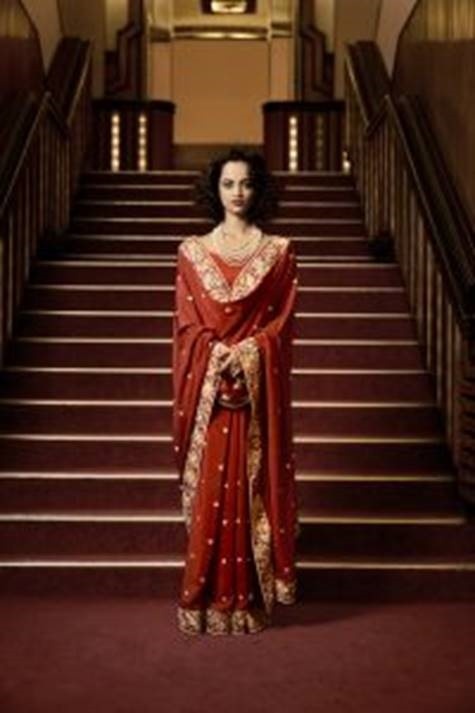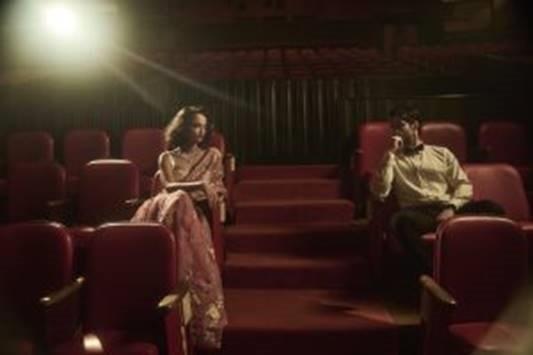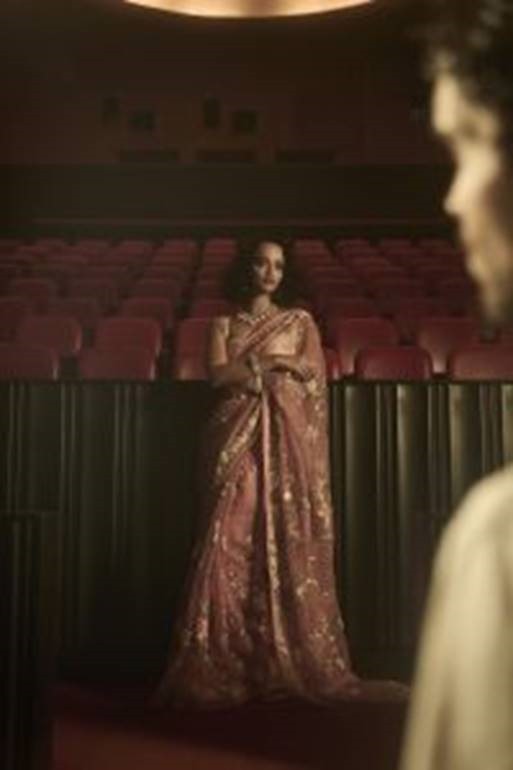Ashdeen Lilaowala is best known for his research and revival work on the Parsi Gara. A craft bequeathed upon us by the Zoroastrian community, discovered during the 19th century period of India-China trade. To understand the history and cultural depth of this intricately precious embroidery, Ashdeen spent the early years of his career travelling across China, India and Iran doing extensive research for the Ministry of Textiles, which further helped him build the foundation of his eponymous brand.
“Gara is more than a technique, it’s an aesthetic”
Article by Ruman Baig | Elle India
His research didn’t just culminate into a blue print for his label, but has also been developed and published as a book titled Threads of Continuity – The Zoroastrian Craft of Kusty Weaving. Based out of Delhi, Ashdeen has been popularising the craft of Gara for over a decade by retailing his painstakingly made saris and accessories across the country.
View this post on Instagram
A post shared by ASHDEEN (@ashdeenl)
Returning to the home turf where it all began, Ashdeen is all set to open a flagship store in Mumbai, giving the city its very own handcrafted Parsi Gara experience at Colaba. The store, with its pastel colours and gold nuances, takes inspiration from the district’s Art Deco movement—while paying homage to the heritage of the Zoroastrian culture.
In a free-wheeling chat with ELLE India, the designer talks to us about the evolution of the craft, road-blocks along the way and how he has seamlessly managed to juxtapose traditions with trends.
ELLE: From opening a store in Mumbai with an Art deco aesthetic to launching a collection with Elizabeth Taylor as your muse, tell us about your newest venture and the process behind it.
Ashdeen Lilaowala: Mumbai is my home turf and it felt like the right time to open a store in the city. It is where the Parsi heritage is seeded and where our culture is conserved the most. Shot across the iconic Liberty Cinema, we visualised if Elizabeth Taylor had come to Bombay and if she wore our sari, how glamorous she would look in them, that was the idea behind the shoot.
ELLE: You have been reviving Gara for quite some time, what are the challenges that you still face in terms of technicalities since it is one of the most intricate crafts?
Ashdeen Lilaowala: As we expand the biggest challenge is to make sure we have the talent of the same calibre. We have very good talented craftsmen working with us, but nearly not enough. Quality checks are important as I cannot have saris of different quality, we need to make sure that every sari that leaves us is up to the mark. It is challenging to find good craftsmen. We employ talent that is patient and have an understanding of the craft. To ensure products of the finest quality and skill, all our clients have to take 2 months as their lead time. We do single-thread embroidery work, many other brands do 2-thread or 4-thread work, which looks fabulous from far, but when you look up close, it looks like shit. There’s a saying in Gujarati, “door ti hira, agal ti keera”. We try to focus on the intricate details of a garment like the back of the sari, each fold, each stitch etc. Since people are paying a high price for our products, we want to give them high-quality garments that they will be proud to pass down from generation to generation.
View this post on Instagram
A post shared by ASHDEEN (@ashdeenl)
ELLE: How can we tackle the lack of skill problem, since only a few artisans excel in this technique?
AL: Firstly, most people do it on job work, if it’s on job work, brands want to do it faster and get more money for it, so the faster you deliver the product the sooner you get money. We do not do job work so that already eases the craftsperson since he knows he’s going to get his money, he doesn’t need to do a rushed, hurried job or do something badly. Secondly, we organise workshops to create awareness, most of our Karigars are shown vintage pieces and textiles, we take them through the processes to make them understand the workings better. With technology, there is a lot of imagery that is available, thus referencing and giving guidelines also becomes easy. Most of the karigars communicate with us via constant WhatsApp video calls to ensure frequent quality checks. Lastly, being respectful towards karigars is important, once they see that, they will put their best foot forward for you. In India we have a lot of talent, you have to be lucky to plug that talent and take it forward. I have learnt a lot from my karigars. Indulge their suggestions, push them. They are not only working hands, they are also thinking minds.
ELLE: Since Paris Gara is a timeless art form, it does come on the expensive side, how do you make it commercially viable from a business perspective?
AL: We make sure we produce various ranges, where some saris start from 45k and go up to 4lakhs. To be accessible to the general public we do bags that start from 10-12k, accessories and stoles that start at 15k-18k, so there is a range for people to pick out items for different occasions that are still heirlooms. We have also recently introduced our bridal collection.
ELLE: In a market where 80% of the brides want to look like a Sabyasachi bride, do you have millennials and Gen Z who do not want to look like that?
AL: Absolutely! Today, women are breaking conventions, they are not going with traditional colours, they are going with pastels or darker colours. We have been noticing a new age of brides that wasn’t noticed 20 or even 10 years ago. Times are changing, brides are now working professionals that have their own ideas and speak their own minds. It’s not what the parents want anymore. It’s a different game today, it’s nice to see young girls making their own decisions and wearing what they are comfortable in.
View this post on Instagram
A post shared by ASHDEEN (@ashdeenl)
ELLE: We have traditionally seen the Gara on a Sari, now we see it on lehengas and menswear, how do you transition to being contemporary while still keeping its authenticity and timelessness?
AL: The Gara is more than a technique, it’s aesthetic, it’s a visual language which translates over elements that bind it together, there is a lot of flora and fauna that make Parsi Gara what it is. There is also a certain sense of rhythm and a flow in the motifs, in the jaals, which makes it different from other crafts.
Recently at the Lakme Fashion Week Show, we launched new silhouettes to contemporise our work which was well received. At the same time, if somebody wears the contemporary version of our garment, their reaction will still always be ‘ that is a Gara shirt or pant’, that kind of reference, is something that we will always hold onto, so the aesthetic, rather than the technique, is how we keep it authentic. We experiment every season with fabrics, silhouettes, and colours.
View this post on Instagram
A post shared by ASHDEEN (@ashdeenl)
ELLE: Since Paris Gara, is the most popular amongst the Parsi community, do you have an extended clientele outside of it? Is it growing? Are more people from other communities investing in it?
AL: In Delhi, 90-95 % of our clients are non-Parsi, 5% of our clients are a mix of Parsis from India and abroad, and we have clients from all communities. We have done exhibitions in Singapore, the UK, the USA, Dubai etc. So, it is not really community driven anymore, we have clients from all over. People from everywhere are gaining awareness through the internet, they go through our feeds, they research our brand, they have done their homework, and they are aware of that sari worn by that girl, wearing that particular motif. People today are informed, they know what they are buying.




